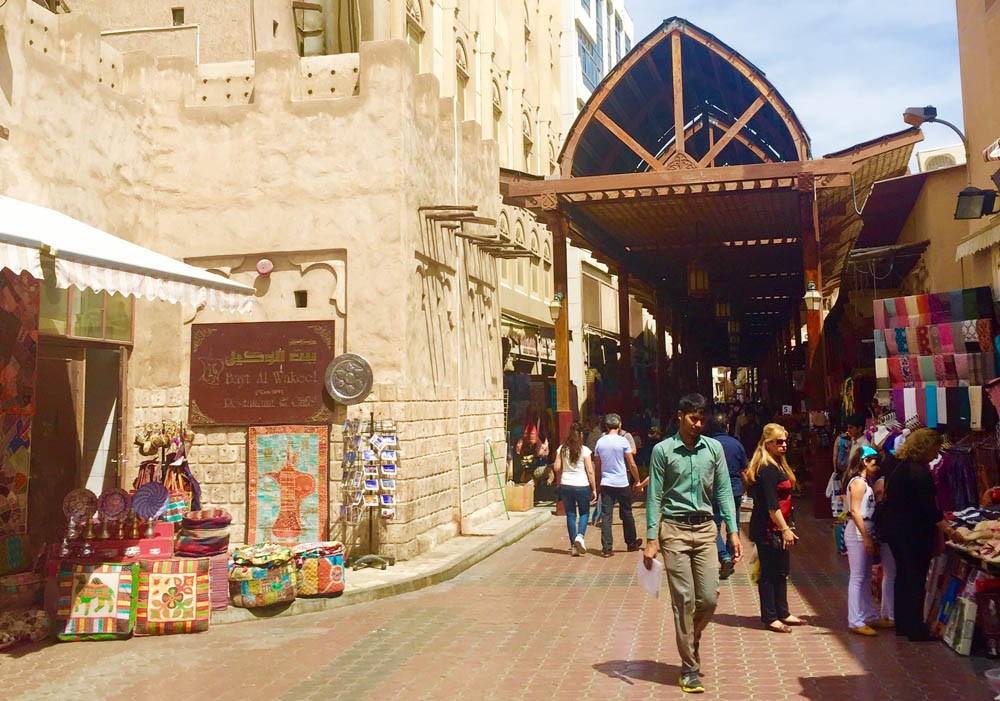
The story of real Dubai, from a fishing settlement to a tourist hub of dazzling lights and snappy PR spin

Dubai is a city usually associated with terms like glamour and luxury, and its architecture is the proof of that. Also, known to have the highest number of expatriates in the county, Dubai has become an ultramodern cityscape that towers over the Arabian Desert. Home to a few of the record breaking structures like the world’s largest dancing fountain; tallest building (Burj Khalifa); only 7-star hotel (the Burj al-Arab); largest mall (The Dubai Mall) with the world’s largest sweetshop (Candylicious), largest artificial islands (the Palm Islands); and largest natural flower garden (the Miracle Garden), it has become a utopia for everyone around the world.
Little do people know that far beyond the glossy pages of Explorer: Dubai, and the elaborate media presentations that showcase the city’s finest moments, is a place rich with culture and history.
Dubai has played its marketing card very well, representing the whole idea of ‘luxury’, ‘extravagance’, ‘glitz and glamour’, ‘cultural architecture’ and this is exactly why people from all around the world come to be a part of this luxurious experience of Dubai. But normally, what a person might fail to notice, is the history of the city.
Dubai, where people once used to ride camels and horses, wrapped in cloth, faces covered and sweltering in the blistering heat, they now sit comfortably within the air conditioned interiors of their Mercedes, BMWs etc. A place where people used to gather around market stalls, for food and necessities, now step into huge, well-lit, spacious malls, and where there are more images to advertising as opposed to people on the streets.
Dubai has still preserved its culture, but it does not promote it as much as the city’s more glamorous side. Dubai, which once had a famous pearl industry, where dhows and camels were the only mode of transport and falconry was (and still is) the traditional sport of the region is much more than the city of ostentatious skyscrapers.
The discovery of oil was a game-changer -- it provided job opportunities for expatriates and generated great wealth. If you think about it, it was not that long ago that the city was as familiar with camels and dhows as it is now with Ferraris and indoor ski slopes.
Professor Anne Cronin once said, "Cities use images to market themselves as tourist destinations." This is the reason why everyone who comes to visit Dubai is familiar with the famous skyscrapers and malls from the images they have been exposed to. Why are they not told to visit the heritage village (based in Old Dubai area) or go take a ride on the Abra that groan and creak in protest as you ferry across the water? Basically, why not experience what Dubai used to be - fishing and trading village?
The answer to why no one is ever told about the old part of Dubai is because the city has done very little to promote the historical and cultural aspects of the city. Although, one can argue that the government has now started to promote extensively the cultural and historical aspects, they still go unnoticed by a whole bunch of people around the world because this aspect of the city was never planted in peoples mind in the first place. In its search for glitz and glamour, Dubai sacrificed its prestigious history in a way.
A person who lived in Dubai for a long time can say that it is a city brimming with culture, tradition and diversity. There are people from different social classes, races and backgrounds spread throughout the city, which is why it is essential for the tourists to experience the same Dubai -- friendly, historical, broken, vandalised and well, not artificial where people have no time to connect or even smile at each other.
Take a tour of the part of that city where there are small concrete buildings everywhere, every turn we take and every alley we look at. It feels like the buildings are interacting with each other. These are mostly two or three storey buildings. All built so close to each other, a community of its own, within every alley you walk down. It is like a city within another but nothing like the high-rise buildings in new Dubai, all spaced out, with glass chrome structure.
In the old city, legit huts, made out of straw and bedouin tents greet visitors. These may look like monuments, as examples of how locals used to live before. There are more structurally sound straw huts being built, and people are still living in them. Every area of the city holds unique stories to be told, and no matter how unimportant or insignificant they may seem to others, these stories continue to exist for every person in the city.
One such place would be the Sheikh Saeed Al Maktoum’s old house. The entire place is dedicated to covering the architectural history of the Emirates. There are clay dolls, depicting scenes from the old days when men and women used to live in tents, and aerial maps of how Dubai was in 1945 as opposed to how it looks in recent years. The entire museum has large, real-life looking sculptures surrounded with speakers by sounds of people chattering away and hammers clanging on metal, depicting routines of people back in the days.
So, next time you hear that someone is visiting Dubai, suggest to them these places rather than the usual tourist spots. As one would say, "the city is like a cover model; people from a distance only know the glamorous pretences, not the blunt reality".
That’s not saying Dubai isn’t beautiful; it is especially at night. But that’s mostly all tourists from around the world will ever see on travel guides, postcards, and tourism media.